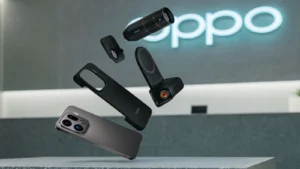Meta is planning a robotics software platform modeled after Android, aiming to give manufacturers a ready-made “robot OS” for humanoid and service robots. According to Reuters, the initiative is part of a new robotics division under Reality Labs and is backed by CEO Mark Zuckerberg and CTO Andrew Bosworth. The idea sounds revolutionary — but can it really work in a field where hardware and software are inseparable?
What Meta’s “Android for Robots” Means
The model borrows from Android’s success in smartphones: create a universal software stack, license it widely, and build a developer ecosystem around it. In robotics, Meta wants to provide modules for:
- Perception (vision, sensors, world mapping)
- Motion control (planning and actuation)
- AI reasoning (using Llama and other large models)
- Simulation tools for testing and training
As The Verge reported, Bosworth has argued that Meta should prioritize software over hardware, letting others build the physical robots while Meta powers the intelligence.
Why the Idea Looks Promising
There’s logic in Meta’s ambition:
- Scale: Hardware makers save time by adopting Meta’s ready-made software.
- Developer ecosystem: A shared platform could attract app and service developers.
- Faster innovation: Improvements in Meta’s core software would ripple across many robots.
- AI leverage: Meta’s strength in generative AI (e.g., Llama) could give robots advanced reasoning capabilities.
This mirrors how Android allowed smartphone makers to flourish by leaning on a common OS.
The Tough Roadblocks Ahead
1. Hardware and software are inseparable
Unlike phones, where differences are minor, robots vary wildly in sensors, actuators, and latency requirements. A “one-size-fits-all” platform risks breaking under that diversity.
2. Safety and real-time control
Humanoid robots must react within milliseconds to avoid errors. Guaranteeing safety across multiple hardware vendors is harder than running apps on a phone.
3. Adoption and trust
Robotics firms already use ROS (Robot Operating System). Convincing them to switch to Meta’s ecosystem requires trust, strong support, and clear benefits.
4. Business model doubts
Licensing robot software may not be as lucrative as Android licensing. Sales cycles are slower, margins smaller, and integration costs higher.
As ChannelChek notes, Meta is reportedly in talks with robotics firms like Figure AI and Unitree, but partnerships will be crucial to gain traction.
What Success Would Require
For Meta to succeed, it must:
- Certify safety standards for robots using its platform.
- Offer modular software layers to fit different hardware designs.
- Invest in simulation to reduce real-world training costs.
- Build developer tools to attract coders beyond Meta.
- Start small with limited domains (warehousing, logistics) before expanding to home robots.
Frequently Asked Questions (FAQs)
Q1: Will Meta’s platform replace ROS?
Not immediately. ROS is open-source and widely adopted. Meta’s platform would compete only if it offers better performance, support, and business incentives.
Q2: What makes this different from Tesla’s Optimus or Figure AI?
Tesla and Figure AI build integrated robots with in-house software. Meta’s bet is to be the common layer across many manufacturers, similar to Android’s role in phones.
Q3: When might robots using Meta’s OS appear?
Industry experts suggest pilot projects within the next decade, but mainstream adoption could take 15–20 years, depending on progress in safety and costs.
Conclusion
Meta’s plan to build an Android-style robotics software platform is bold, but reality is far more complex than smartphones. Hardware diversity, safety, adoption hurdles, and unclear monetization all stand in the way. Still, if Meta can overcome these challenges, it might reshape robotics the same way Android reshaped mobile.
Key Takeaway: The Android analogy is compelling, but robotics requires solving far deeper engineering and trust problems before Meta’s vision can scale.
Last Updated on October 18, 2025 by Lucy




